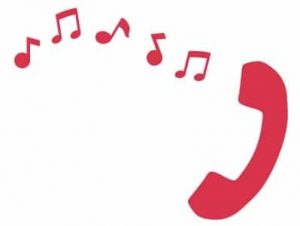 The initial offer message is one of the most important components of the call-back process. Therefore, it goes without saying that there are countless approaches you can take when determining what that message should say, and when is the best time to play it.
The initial offer message is one of the most important components of the call-back process. Therefore, it goes without saying that there are countless approaches you can take when determining what that message should say, and when is the best time to play it.
Different Approaches for Different Goals
It is important to customize your use of the call-back offer message depending on what goals you are hoping to achieve, as well as the type of queue you are playing it on. Although every company and every phone queue will seek to achieve different goals from implementing call-backs, below are some thoughts and suggestions on how you can decide when and how to offer call-backs.
Lowering Abandonment Rates
There are a few different ways you can maximize your use of call-back with the goal of lowering your abandonment rates.
Firstly, you can determine your Average Abandon Time, and make sure you play the offer message before this point in the queue. This will create a good balance between your usage of call-backs and capturing the most number of callers who would otherwise abandon their calls in queue.
Secondly, you may have the ability to calculate your Current Abandonment Rate, and your Target Abandonment Rate. If so, you can use these along with your historical call statistics to determine the time within the queue that playing the offer message would lower abandonment rates to meet your targets. This strategy is more complicated, but may yield more targeted results.
Providing the Best Customer Service
If your goal is to provide the best customer service possible, you will likely want to be playing the offer message sooner in the queue than if you were just trying to keep callers from abandoning their call.
In this scenario, it might seem reasonable to play the offer message as soon as possible, but this isn’t necessarily true. We have found that it is best to play the offer message no sooner than 30-60 seconds after a caller enters the queue, as callers often are not as attentive when they first enter the queue and may not hear the message properly.
Giving the caller some time to wait on hold increases the chance that an Agent might become available to them, and increases the likelihood that they will opt-in for the callback since they have already spend a little time on hold.
Call-Backs on Sales Queues
Sales is where the money is at, and providing call-backs on your sales queues can be an excellent way to capture more sales and see a tangible financial return on your use of call-backs. The goal here is to capture sales that you would otherwise lose to abandons.
A combination of the two above strategies may prove optimal when offering call-backs on a sales queue: determining the average abandonment rate, but playing the message a little sooner to maximize the capture of those otherwise lost sales. Since the cost of a call-back is much less than the cost of a lost sale, its arguably a good strategy to capture as many of those abandoned sales calls as possible.
Emergency Fall-Back
It is also common to use call-backs as an emergency fall-back on days where you might see call-spikes. This doesn’t mean manually turning call-backs on and off within your phone system, but rather setting the time of the first offer message after your average hold times. This would decrease the chance of a caller opting in for a call-back on a day with regular volume, but means that they have the option when hold times increase, catching you off guard. For example, if you average hold times are 5 minutes, but you see spikes of up to 20 minutes, you may consider playing the message between the 10-15 minute mark to act as a safeguard when hold times get too long.
The Message Itself
It is just as important to play the offer message at the right time, as it is to play a good offer message. Playing a good, thoughtful offer message is key to increase call-back uptake rates.
For example, you will want to consider include using understanding verbiage (remember, they are sitting on hold!), as well as having your voice talent read the message back slowly as they may not have been paying attention.
If you require any assistance in determining when you should play the offer message, or how to craft the offer message, please reach out to our Fonolo Support at Support@Fonolo.com and we would be happy to assist you.
